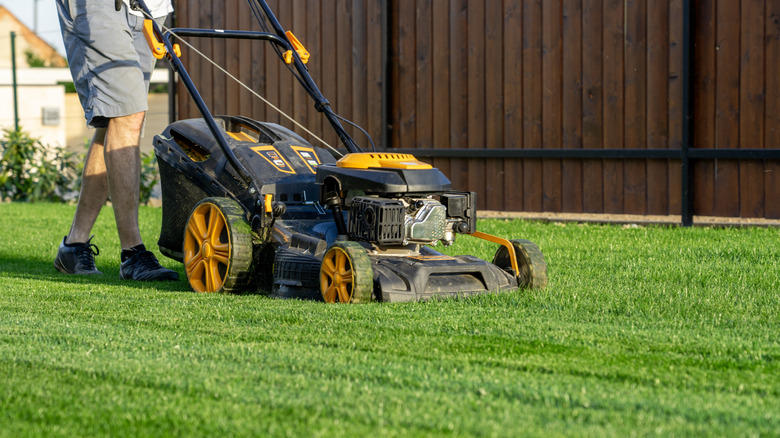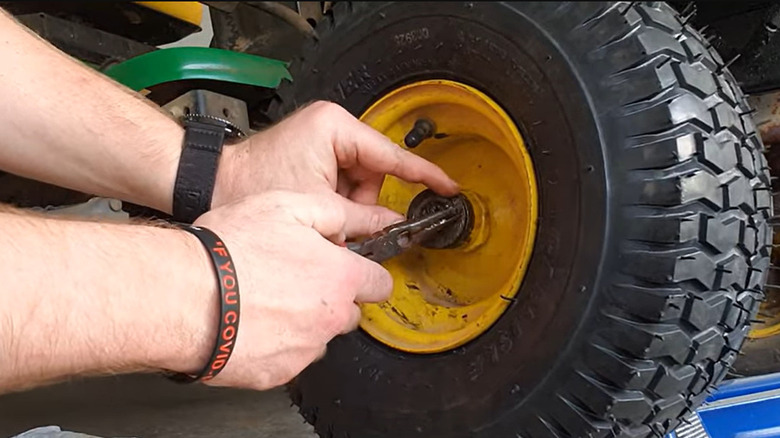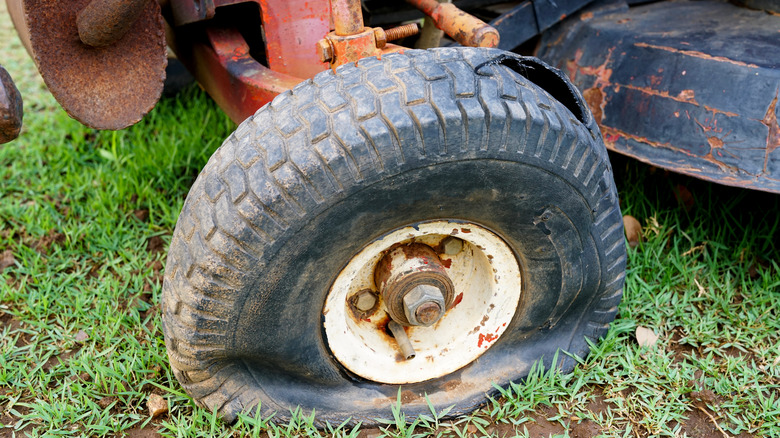How And When To Replace The Tires On Your Lawn Mower
If you've ever tried mowing the lawn and found your mower wobbling like a suitcase with a broken wheel, you know something's up. Most people assume it's the engine acting up, but more often than not, it's the tires trying to tell you something. And it only makes sense. They bear the entire weight of your mower (and your weekend plans) and take all the bumps that life throws their way. Like any hardworking part, they eventually give out. Depending on the type of lawn mower you own, the process of changing a worn-out tire may involve laying it flat on a stable surface, deflating it, and gently freeing it from the wheel. As soon as you notice the wheels losing traction or showing visible wear, that's your sign to consider replacement.
It's worth keeping an eye on your mower's tires because waiting too long to replace them can make every pass across the lawn no less than a workout. Worn-out tires are likely to slip and cause patchy cuts. Fresh tires, on the other hand, roll better. This makes steering them easier, and the whole job naturally becomes more efficient.
How to replace lawn mower tires step by step
First things first, unplug the spark wire for safety; you do not want any unpleasant surprises while working near the wheels. Then, gather your tools. You'll need a socket wrench, needle-nose pliers, jack stands or wood blocks, a screwdriver, a ratchet strap, and an air pump. Park the mower on an even surface, such as a driveway. If you're working on a riding lawn mower, you'd need to lift it carefully using a jack. Make sure you slide something underneath, ideally jack stands or wood planks, to keep it steady. For a push mower, consider setting the height adjustment to its highest notch. You need to have enough space to maneuver.
Now, let's get that old tire off. Pop off the dust cap and look for what's holding the wheel. Riding mowers usually use a C-clamp on the wheel hub. Grab needle-nose pliers to remove them. Push mowers, on the other hand, feature a bolt that you can loosen with a socket wrench.
Once the wheel comes off, let the air out of the tire and detach the valve core to release the remaining air. Then push down on the sidewall to loosen it from the rim. You can use a screwdriver to work the old tire off. Finally, slip on a new tire. A ratchet strap around the tire's center will grip it evenly as you inflate it with an air pump. That's it! Put everything back, and you're basically done.
When to replace the tires on your lawn mower
Typically, you'll get about three to five good years out of your lawn mower tires. But instead of counting birthdays, it's smarter to watch for the little hints your mower drops along the way. For example, if your once-smooth mowing now leaves behind uneven bald spots, your tires are likely losing traction. When the tread wears down, they struggle to grip the grass properly. This is more frequent on uneven ground. You'll also notice your mower spinning in place or slipping.
Low air pressure is another sign it may be time to replace your lawn mower tires. When tires start to sag, your mower sits lower to the ground. This eventually puts more strain on the engine. As such, you'll feel like you're dragging the mower rather than gliding it. Then there's dry rot. Caused by excessive sun and heat, it shows up as cracks on the tire's sidewalls. Once this happens, the rubber becomes brittle and can split under pressure. Add to that any physical damage, like bulges or weird deformations, and it's a clear sign your tires are done. The sooner you replace them, the smoother your mower will run.


